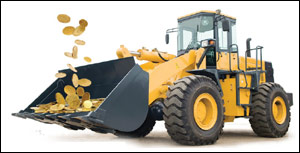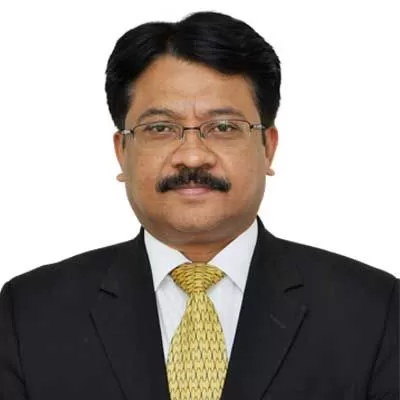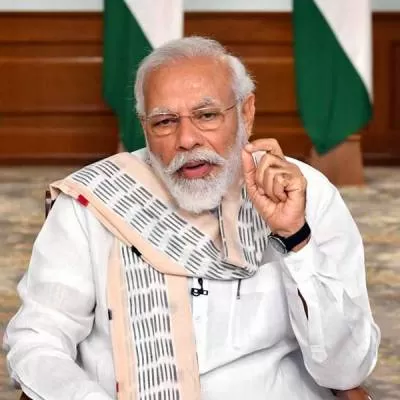- Home
- Infrastructure Urban
- ECONOMY & POLICY
- Equipped for growth

Equipped for growth
Over the past 10 years, construction has been contributing to India’s GDP in a big way. From a 5.8 per cent, today it contributes to 7.3 per cent of the total GDP. The investment multiple is set to grow on an average by 2.5 times across the infrastructure spectrum. Thus, in terms of demand for construction equipment, the scenario is set for a long and sustainable growth. While the industry’s future prediction is anybody’s guess, talking of the present, here’s a reality check.
“Construction equipment financing is going through a slow period,” says Sunil Gupta, National Sales Head-CE, M & HCV, SME and Auto Lease, Magma Fincorp Ltd. Ranjit Majarekar, COO Infrastructure Finance, Tata Capital, shares his observations, “Today, the financial strength of all infrastructure companies is being tested severely.” Talking from his experience, DK Vyas, CEO, Srei BNP Paribas, affirms, “There has been de-growth in equipment sales, especially for corporate and large customers.”
What are the issues affecting the industry? According to Gupta, mining and road projects being stuck for environment and forest clearances is one major issue. “These factors have led to 20 per cent decline in the construction equipment sales this year as compared to the same time last year,” he points out. Majarekar avers, “There are considerable project delays and a lot of capital issues like interest hike, ECB issues, depreciation of rupee, etc, have affected the industry.” He adds, “Second, if we analyse the project cost at 8 per cent, today the cost has gone up by 12.5 per cent. So, there is definitely a reduction in the project receivables.” While large infrastructure companies are not being able to honour their commitments, some sub-contractors have started defaulting as well. This has led to ripple effects and ratings have gone down, further impacting a company’s ability to raise funds. For Anil Bhavnani, Senior Vice President & Head-Infrastructure Finance Group, HDFC Bank Ltd, the situation is certainly not a straightforward one. But he says positively, “Post elections and with a stable government, there is a possibility of growth in the infrastructure industry.”
Maintaining records
Being among the slowest years of growth, 2013-14 has impacted the banks and NBFCs loans books as well. For Vyas, Srei’s loan book has more or less been flat, though there has been no de-growth owing to the company’s diversification in IT equipment, medical equipment and rural infrastructure and logistics, etc. “Irrespective of that, we have not reduced our market share in financing construction equipment,” he says affirming that the company still holds the number one position with 30 per cent odd market share in financing construction equipment.
Alternate options have been the way forward for banks and non-banking financial corporations (NBFCs) to maintain a loan book. However, at this point in time, Tata Capital is not looking at growth and increasing its order book. Majarekar says, “We need to work very closely with the customers, acquire and retain the good ones.” He adds, “So, we are watching the situation and increasing our business.”
The buyers
If corporate and large customers are getting affected, who are the ultimate buyers? For Srei PNB Paribas, equipment is mostly being sold and financed to SMEs or retail customers. Magma also foresees demand from retail customers. “The demand is mainly coming from the hiring segments who manage the assets at a very low operating cost,” says Gupta. Also, HDFC Bank has an extremely high percentage of repeat customers and majority of its clients are through referrals. For the bank, demand is coming from large or mid-sized corporate, small and medium enterprises and first time users as well.
Market trends
The construction equipment market is driven by three major asset classes – backhoe loaders, excavators and cranes. However, these assets as well experienced a decline in sales this year as compared to last year.
Magma, which has traditionally been a retail finance company, has shifted its focus from urban areas to rural India and has moved out of large companies. “In villages, there is the PMGSY and Public Work Department works. Also, straight roads are being developed. Hence, equipment sales are happening in the rural market,” says Gupta.
In terms of offerings, SREI BNP Paribas offers a completely integrated value chain right from financing the equipment, offering operating leasing, renting, exchange financing, etc. Apart from this, the company believes in a solution oriented approach and customised solutions are being designed for every customer individually.
HDFC Bank, with more than 3,100 branches around 1,400 cities, provides customised and complete banking solutions both for immediate and long-term needs. It offers a bouquet of banking products under one roof to the infrastructure and construction segment clients and contractors at the best price and in best possible times.
Tata Capital has almost Rs 6,000 crore in infrastructure space, in its order book, and 50 per cent of that comes from equipment finance. One of the company’s recent activities is syndication, where it assists corporate to leverage on debt as an instrument to raise capital through structured financial products for various requirements including greenfield projects, expansions, working capital and in structuring and syndicating funds for acquisitions. This enables an uninterrupted flow of funds and is a one-point contact for all the debt requirements.
Viable mode
With demand for equipment picking up, buying seems to be the most preferred option. Leasing is not very popular in India. The customers want to own and operate the equipment all by themselves rather than taking it up on leasing. Unfortunately, the rental and leasing markets are just 2 to 5 per cent, with more unorganised players in them than organised ones.
While Gupta feels that in the Indian scenario, leasing is not a preferable option, Vyas points out this to be the right time to promote leasing in the country. He says, “I personally feel that for large customers who are into CDR (corporate debt restructuring) and find difficulties in accessing lines of credit for new equipment, this is the right time to acquire the equipment under lease.” The main challenge in leasing is dual taxation, subject to service tax and VAT. This is one thing that needs to be addressed.
Growth drivers
The demand of construction equipment is linked with investments in the infrastructure and construction activities. According to Bhavnani, “The top four infrastructure sectors, in terms of the quantum of present and future investments are urban infrastructure, ports, power and roads. All these sectors are strong users of backhoe loaders or excavators, mobile and crawler cranes. Hence, we expect demand to grow for these equipment.” Gupta also foresees demand for earthmoving machinery like backhoe loaders, excavators and road construction equipment like compactors, graders and tippers. He believes, “Several road projects are expected to get cleared soon following the formation of the new government.” In the roads sector, Vyas looks at state highway and PMGSY projects and NHAI introducing EPC contracts as an opportunity. He also looks at mining as an opportunity, stating, “There are a lot of tenders from Coal India and their subsidiaries. Sale for contract mining equipment – larger excavator, tippers, dumpers, etc – is picking up.”
For the industry, the second half of the financial year 2014-15 looks hopeful. This to an extent depends on factors like election results and policy decisions taken by the new government. Also, it is not simply financing, but lenders, financiers, customers and manufacturers together have to work towards creating demand. With India’s growing population and booming economy, the opportunity lies in expanding and modernising the country’s infrastructure. This will require large investments in addressing the deficit in quality and quantity and will benefit construction equipment financing.
From the buyers…
Vidhu Shekar, Manager-Purchase, Valecha Engineering, says, “The current equipment financing scenario is not very encouraging as the construction industry is going through a tough phase. Although I prefer buying from a non-banking financial corporation, but as a buyer, the current interest rates should be reduced. Also, payback period, which is normally three to five years, should be increased to seven to 10 years.”
Sunil Kumar Agarwal, President & CEO, ARSS, says, “The market is not very lucrative for the buyer because the work in hand does not help fully utilise the equipment we have purchased. We prefer leasing because it is a time bound programme that we are signing with the NBFC and the repayments are lower. NBFCs have different kinds of modes – dry lease, wet lease – and they offer rental as well. However, banks only have a term loan, which needs to be paid over a period of five to seven years.”
(With additional inputs from SUDHEER VATHIYATH)
To share your views on the present equipment financing scenario, write in at feedback@ASAPPmedia.com
While FY2013-14 has been among the slowest years of growth, SHRIYAL SETHUMADHAVAN looks at the strategies adopted by financial institutions and explores future equipment growth drivers.Over the past 10 years, construction has been contributing to India’s GDP in a big way. From a 5.8 per cent, today it contributes to 7.3 per cent of the total GDP. The investment multiple is set to grow on an average by 2.5 times across the infrastructure spectrum. Thus, in terms of demand for construction equipment, the scenario is set for a long and sustainable growth. While the industry’s future prediction is anybody’s guess, talking of the present, here’s a reality check.“Construction equipment financing is going through a slow period,” says Sunil Gupta, National Sales Head-CE, M & HCV, SME and Auto Lease, Magma Fincorp Ltd. Ranjit Majarekar, COO Infrastructure Finance, Tata Capital, shares his observations, “Today, the financial strength of all infrastructure companies is being tested severely.” Talking from his experience, DK Vyas, CEO, Srei BNP Paribas, affirms, “There has been de-growth in equipment sales, especially for corporate and large customers.”What are the issues affecting the industry? According to Gupta, mining and road projects being stuck for environment and forest clearances is one major issue. “These factors have led to 20 per cent decline in the construction equipment sales this year as compared to the same time last year,” he points out. Majarekar avers, “There are considerable project delays and a lot of capital issues like interest hike, ECB issues, depreciation of rupee, etc, have affected the industry.” He adds, “Second, if we analyse the project cost at 8 per cent, today the cost has gone up by 12.5 per cent. So, there is definitely a reduction in the project receivables.” While large infrastructure companies are not being able to honour their commitments, some sub-contractors have started defaulting as well. This has led to ripple effects and ratings have gone down, further impacting a company’s ability to raise funds. For Anil Bhavnani, Senior Vice President & Head-Infrastructure Finance Group, HDFC Bank Ltd, the situation is certainly not a straightforward one. But he says positively, “Post elections and with a stable government, there is a possibility of growth in the infrastructure industry.”Maintaining recordsBeing among the slowest years of growth, 2013-14 has impacted the banks and NBFCs loans books as well. For Vyas, Srei’s loan book has more or less been flat, though there has been no de-growth owing to the company’s diversification in IT equipment, medical equipment and rural infrastructure and logistics, etc. “Irrespective of that, we have not reduced our market share in financing construction equipment,” he says affirming that the company still holds the number one position with 30 per cent odd market share in financing construction equipment.Alternate options have been the way forward for banks and non-banking financial corporations (NBFCs) to maintain a loan book. However, at this point in time, Tata Capital is not looking at growth and increasing its order book. Majarekar says, “We need to work very closely with the customers, acquire and retain the good ones.” He adds, “So, we are watching the situation and increasing our business.”The buyersIf corporate and large customers are getting affected, who are the ultimate buyers? For Srei PNB Paribas, equipment is mostly being sold and financed to SMEs or retail customers. Magma also foresees demand from retail customers. “The demand is mainly coming from the hiring segments who manage the assets at a very low operating cost,” says Gupta. Also, HDFC Bank has an extremely high percentage of repeat customers and majority of its clients are through referrals. For the bank, demand is coming from large or mid-sized corporate, small and medium enterprises and first time users as well.Market trendsThe construction equipment market is driven by three major asset classes – backhoe loaders, excavators and cranes. However, these assets as well experienced a decline in sales this year as compared to last year.Magma, which has traditionally been a retail finance company, has shifted its focus from urban areas to rural India and has moved out of large companies. “In villages, there is the PMGSY and Public Work Department works. Also, straight roads are being developed. Hence, equipment sales are happening in the rural market,” says Gupta.In terms of offerings, SREI BNP Paribas offers a completely integrated value chain right from financing the equipment, offering operating leasing, renting, exchange financing, etc. Apart from this, the company believes in a solution oriented approach and customised solutions are being designed for every customer individually.HDFC Bank, with more than 3,100 branches around 1,400 cities, provides customised and complete banking solutions both for immediate and long-term needs. It offers a bouquet of banking products under one roof to the infrastructure and construction segment clients and contractors at the best price and in best possible times.Tata Capital has almost Rs 6,000 crore in infrastructure space, in its order book, and 50 per cent of that comes from equipment finance. One of the company’s recent activities is syndication, where it assists corporate to leverage on debt as an instrument to raise capital through structured financial products for various requirements including greenfield projects, expansions, working capital and in structuring and syndicating funds for acquisitions. This enables an uninterrupted flow of funds and is a one-point contact for all the debt requirements.Viable modeWith demand for equipment picking up, buying seems to be the most preferred option. Leasing is not very popular in India. The customers want to own and operate the equipment all by themselves rather than taking it up on leasing. Unfortunately, the rental and leasing markets are just 2 to 5 per cent, with more unorganised players in them than organised ones.While Gupta feels that in the Indian scenario, leasing is not a preferable option, Vyas points out this to be the right time to promote leasing in the country. He says, “I personally feel that for large customers who are into CDR (corporate debt restructuring) and find difficulties in accessing lines of credit for new equipment, this is the right time to acquire the equipment under lease.” The main challenge in leasing is dual taxation, subject to service tax and VAT. This is one thing that needs to be addressed.Growth driversThe demand of construction equipment is linked with investments in the infrastructure and construction activities. According to Bhavnani, “The top four infrastructure sectors, in terms of the quantum of present and future investments are urban infrastructure, ports, power and roads. All these sectors are strong users of backhoe loaders or excavators, mobile and crawler cranes. Hence, we expect demand to grow for these equipment.” Gupta also foresees demand for earthmoving machinery like backhoe loaders, excavators and road construction equipment like compactors, graders and tippers. He believes, “Several road projects are expected to get cleared soon following the formation of the new government.” In the roads sector, Vyas looks at state highway and PMGSY projects and NHAI introducing EPC contracts as an opportunity. He also looks at mining as an opportunity, stating, “There are a lot of tenders from Coal India and their subsidiaries. Sale for contract mining equipment – larger excavator, tippers, dumpers, etc – is picking up.”For the industry, the second half of the financial year 2014-15 looks hopeful. This to an extent depends on factors like election results and policy decisions taken by the new government. Also, it is not simply financing, but lenders, financiers, customers and manufacturers together have to work towards creating demand. With India’s growing population and booming economy, the opportunity lies in expanding and modernising the country’s infrastructure. This will require large investments in addressing the deficit in quality and quantity and will benefit construction equipment financing.From the buyers…Vidhu Shekar, Manager-Purchase, Valecha Engineering, says, “The current equipment financing scenario is not very encouraging as the construction industry is going through a tough phase. Although I prefer buying from a non-banking financial corporation, but as a buyer, the current interest rates should be reduced. Also, payback period, which is normally three to five years, should be increased to seven to 10 years.”Sunil Kumar Agarwal, President & CEO, ARSS, says, “The market is not very lucrative for the buyer because the work in hand does not help fully utilise the equipment we have purchased. We prefer leasing because it is a time bound programme that we are signing with the NBFC and the repayments are lower. NBFCs have different kinds of modes – dry lease, wet lease – and they offer rental as well. However, banks only have a term loan, which needs to be paid over a period of five to seven years.”(With additional inputs from SUDHEER VATHIYATH)To share your views on the present equipment financing scenario, write in at feedback@ASAPPmedia.com























